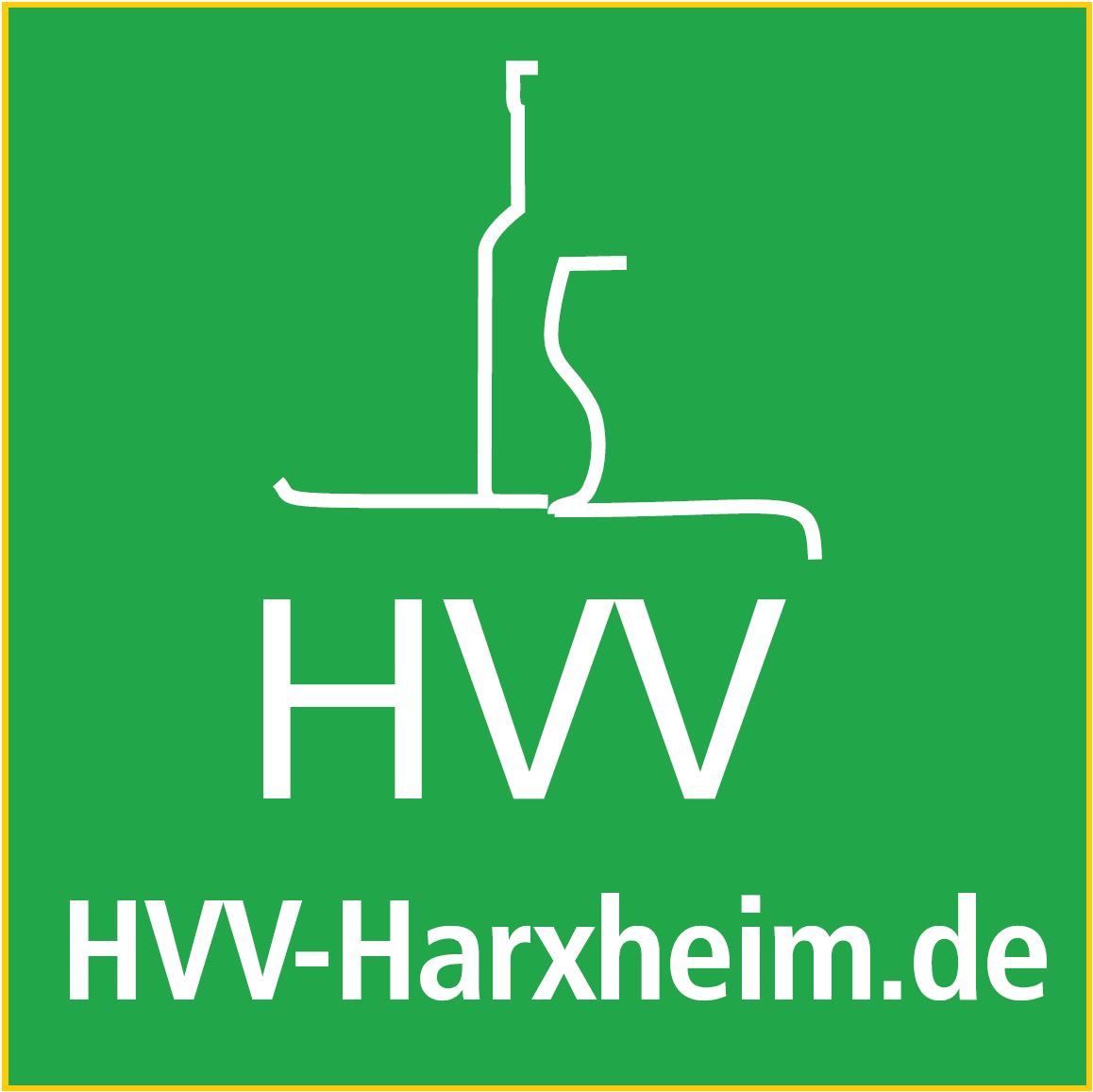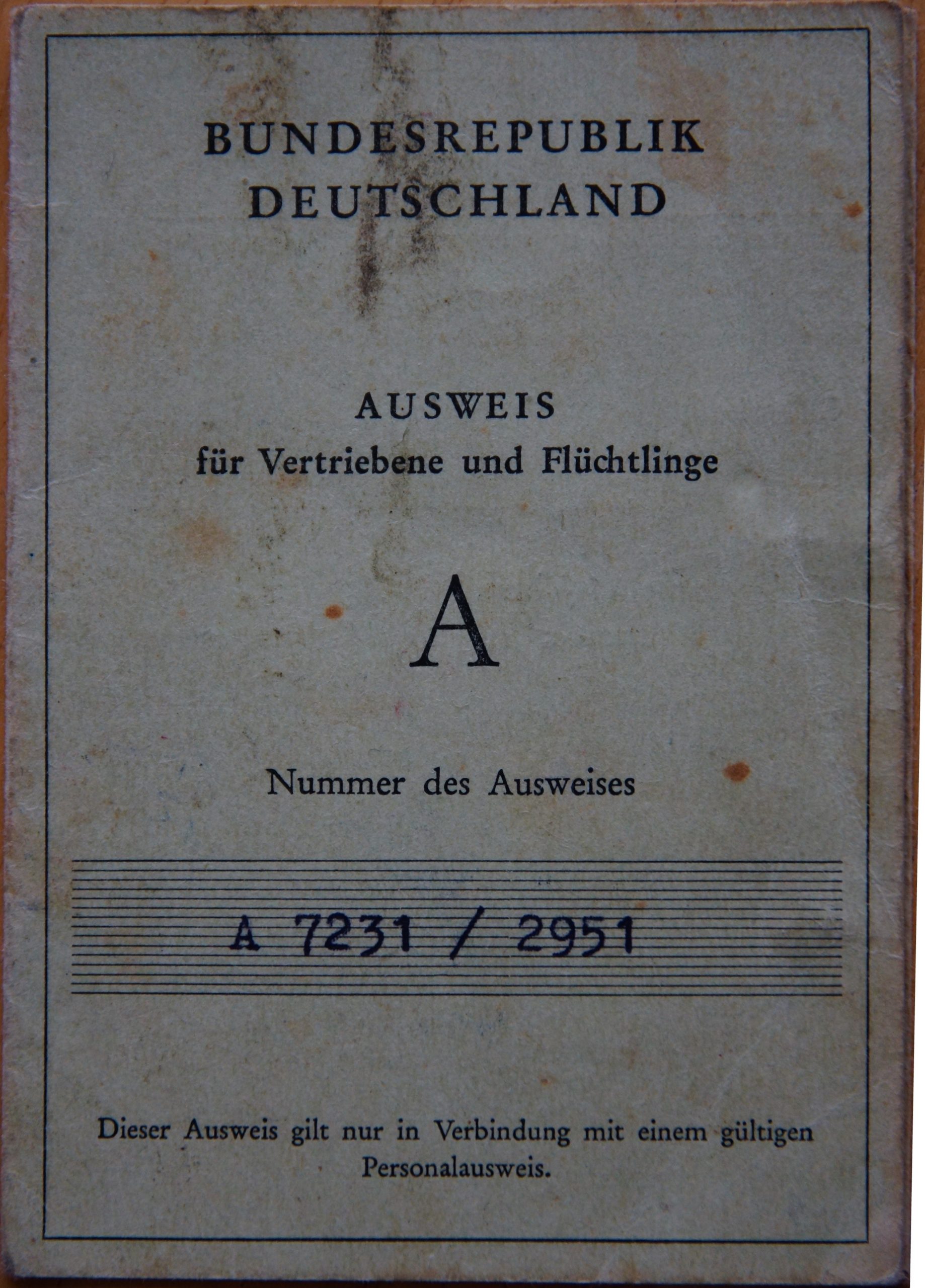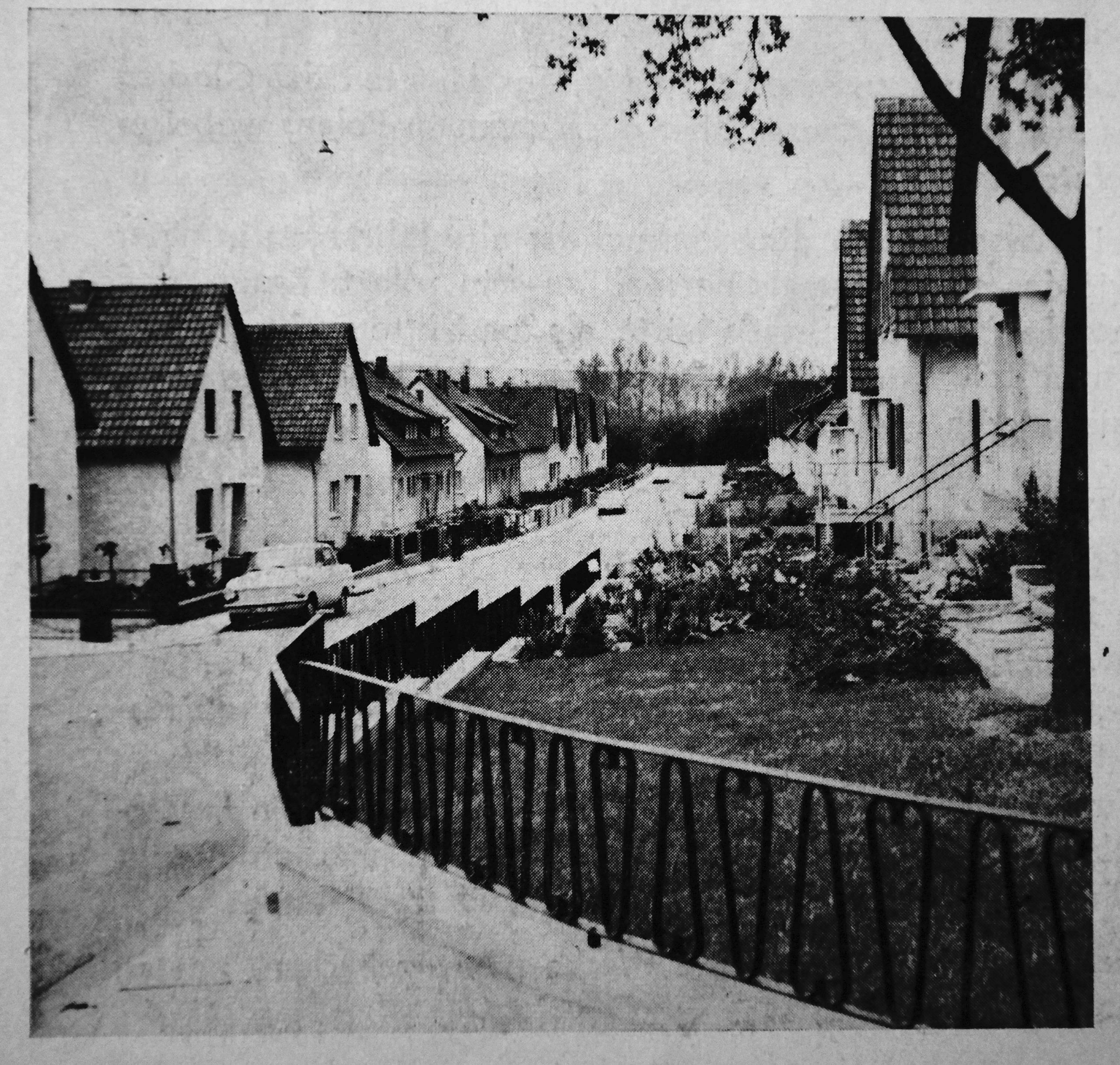Friedenstraße
After World War II, 12 million Germans from the East sought a new home in the Federal Republic. In Harxheim, for example, one of the many secondary commercial group housing estates with 28 building units for new citizens was built in the Friedensstraße at the beginning of the 1960s.
The Second World War was lost, and the former German eastern territories were initially under Russian administration. Boundaries were redrawn.
In the period after 1945, about 12 million Germans left their old homeland in the East, partly voluntarily, partly involuntarily. They left home and farm behind and sought a new future in the West.
Housing was scarce and in demand well into the 1950s, and the housing shortage was slow to diminish. With the support of the public sector, combined with special financing programs of the Deutsche Siedlungs- und Landesrentenbank (German Settlement and State Pension Bank) and the Lastenausgleichsbank (Bank for Equalization of Burdens), many cities and municipalities began to build new apartments or entire housing estates. In 1962/63, a small housing estate was built in Friedenstraße in Harxheim as a new district.
Friedenstraße
Image source: Die Rheinfront Heft 3 “Die Weinbaugemeinde Harxheim”, Bechtolsheim 1968, p.136
The project company GFK (Gesellschaft zur Förderung der inneren Kolonisation GmbH, Bad Kreuznach) built a total of 28 settler sites, the majority of which were detached houses. In order to provide the newcomers with a certain degree of self-sufficiency, a small farm building had to be erected behind each dwelling house. This was designed so that it would have been possible to keep a cow or up to two pigs. However, the new citizens, all of them with agricultural experience, favored exclusively the keeping of chickens in their sideline group settlement, as it was called in the official language.
Thus also in 1963 Ilse and Willi Parotat, born in 1931 and 1933, arrived in Harxheim in Friedenstraße with their three children and moved into their new home. A month later Ilse’s parents followed and moved into the house. Each of the two floors had a self-contained apartment with two rooms, a kitchen and a bathroom. According to today’s calculations, the price of the rather simple and functional buildings, including the land, was around 30,000 euros. Low-interest, long-term financing made the acquisition possible. The plot sizes of around 800 to 1,000 square meters allowed the new residents to grow fruit and vegetables, which greatly helped to relieve tight household budgets.
“We were overjoyed,” Ilse Parotat recounted, “when we arrived here after hard and deprived years and finally had a real roof over our young family’s head again.”
The Parotats had left Pomerania in 1957. Coming via the transit camp Friedland, he first went to Bernkastel-Kues on the Moselle for five years, where Willi Parotat found work as a high-voltage electrician. Behind the couple lay twelve years marked by Russian and later Polish administration. The difficult living conditions and the loss of the family farm were ultimately decisive for the two to follow Willi’s brother to West Germany and leave their old home in East Prussia and Pomerania behind. The hint of an official in the refugee office in Bernkastel-Kues about a settlement project in Harxheim led the Parotats to Rheinhessen, where they were allocated a plot of land after applying.
“The new start in the still foreign community was exciting,” Willi Parotat said. “All the neighbors had been through about the same fate, but were full of joy about their new home. We all worked on our half-finished houses for all we were worth. The neighbors stood together, helping and supporting each other wherever possible.” “Shopping was a bit of a hassle, though,” added his wife Ilse: “There was an open field along Bahnhofstraße between the settlement and the old town, and if you wanted to go to Bölli’s grocery store or Fritzsch’s butcher store, you had to walk a while for a kilometer there and back.”
When asked about the integration and reception of the new citizens by the old-established Harxheimers, Willi Parotat replied, “Ilse went straight into the singing club and I to the SG 03. None of that was a problem. Everyone was polite and courteous to us.” Soon after moving in, Willi Parotat found work at OPEL in Rüsselsheim, where he remained until his retirement. In his free time, he acted as equipment maintainer at the SG 03, was a member of the volunteer fire department and acted with full commitment as a municipal worker for many years. On August 5, 1968, son Udo saw the light of day as the family’s fifth child. The 1,000. Residents of Harxheim was born. The event was celebrated in a big way and the Mainzer Allgemeine Zeitung reported about it.
Today, Peace Street has grown together with the old village. Satisfied and grateful, Ilse and Willi Parotat look back on the decades in their community. The old homeland is not forgotten, but here in Harxheim they have put down roots. While Ilse Parotat could never quite get to grips with wine, for Willi Parotat a good glass of Harxheim wine is definitely part of the good life.
References:
Eyewitness interviews and reports from 2016 to 2021
Private documents of Ilse and Willi Parotat
Own research.



